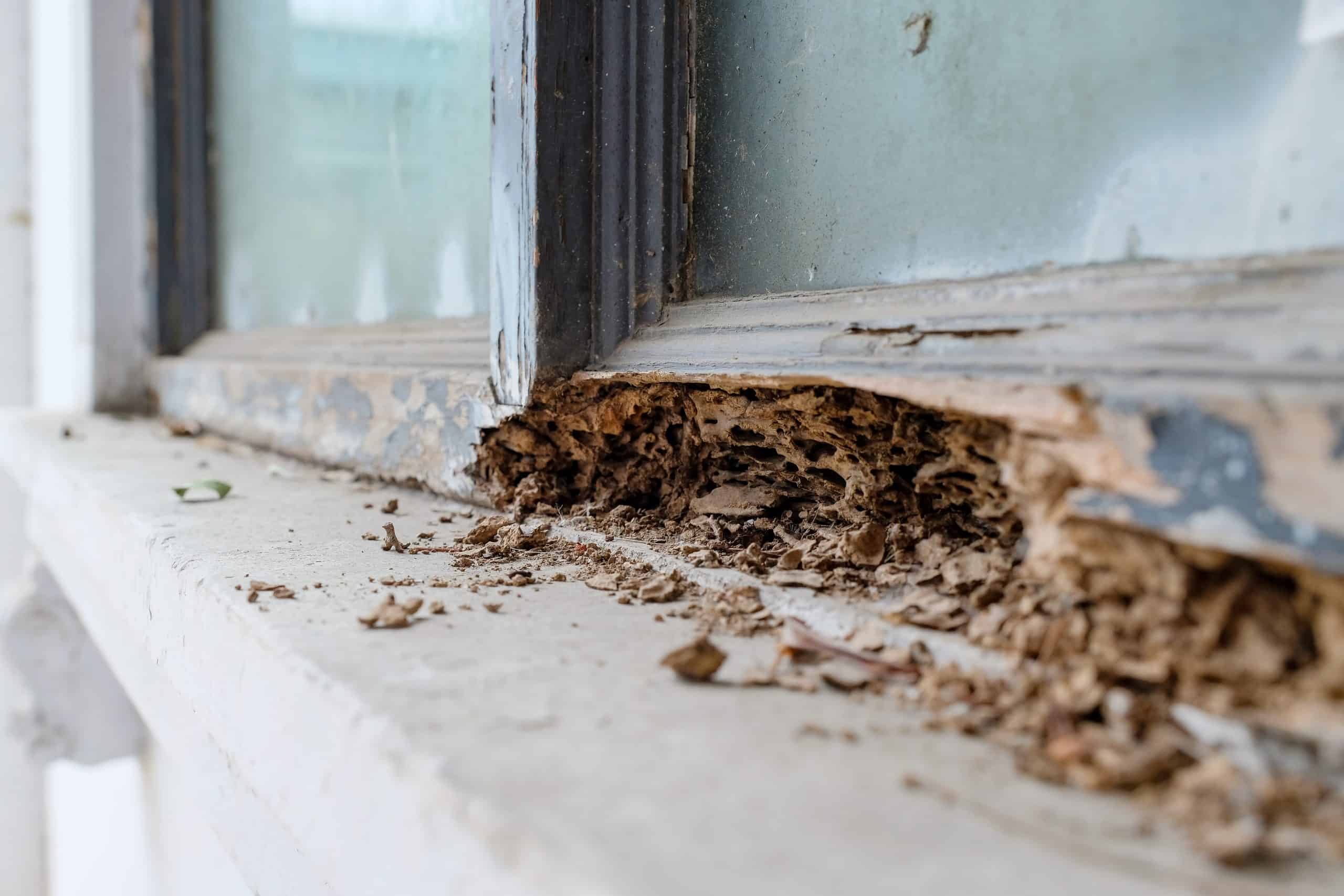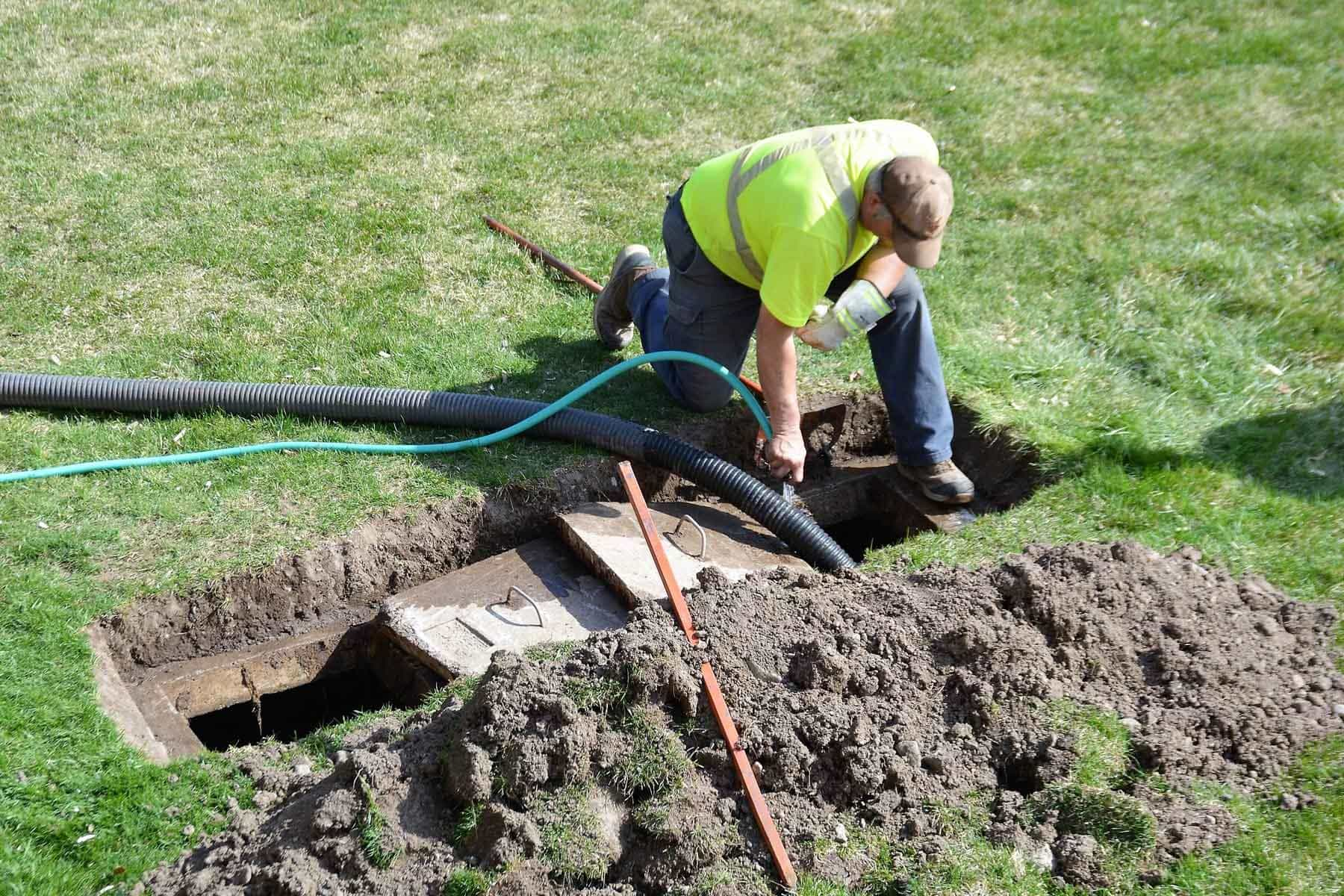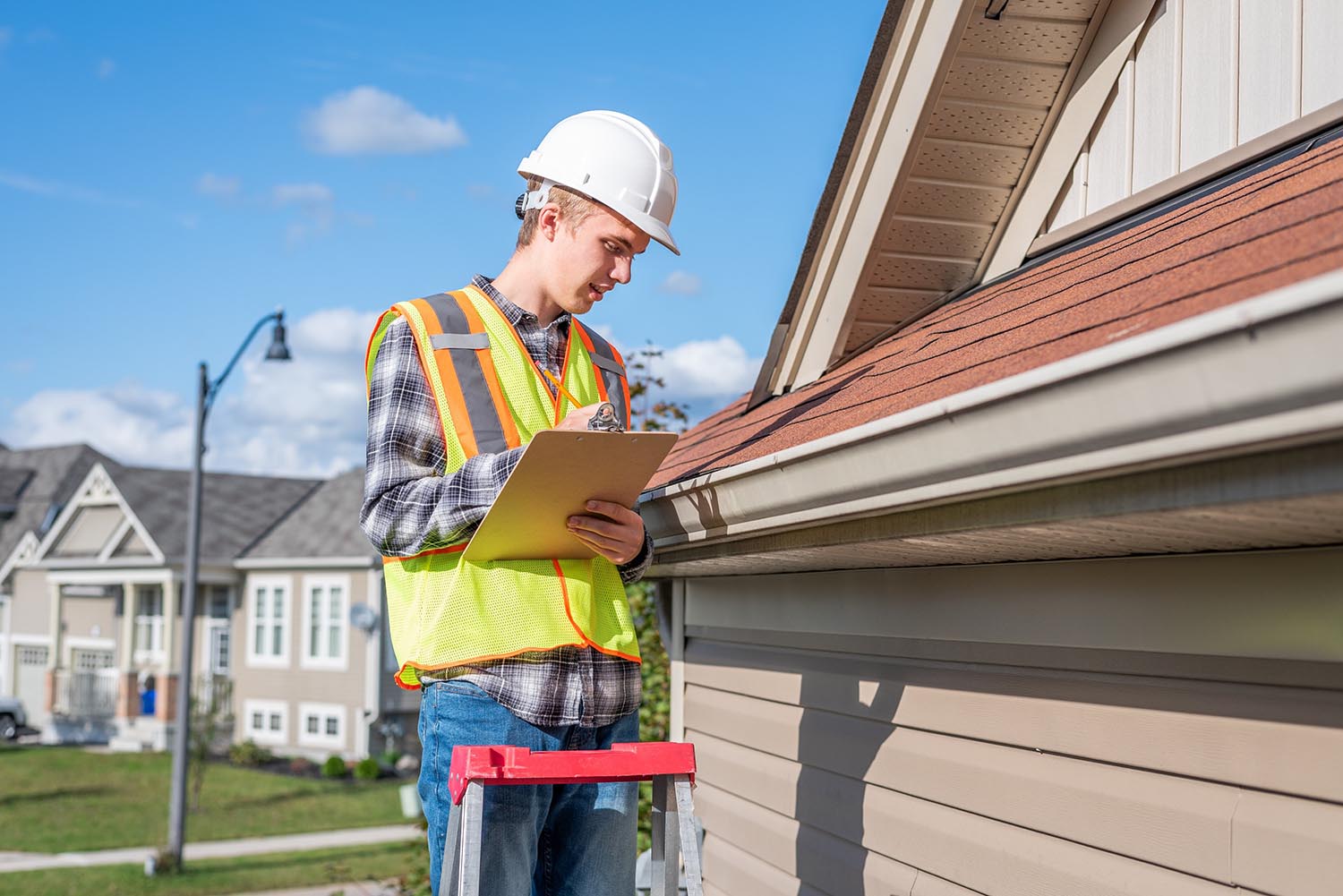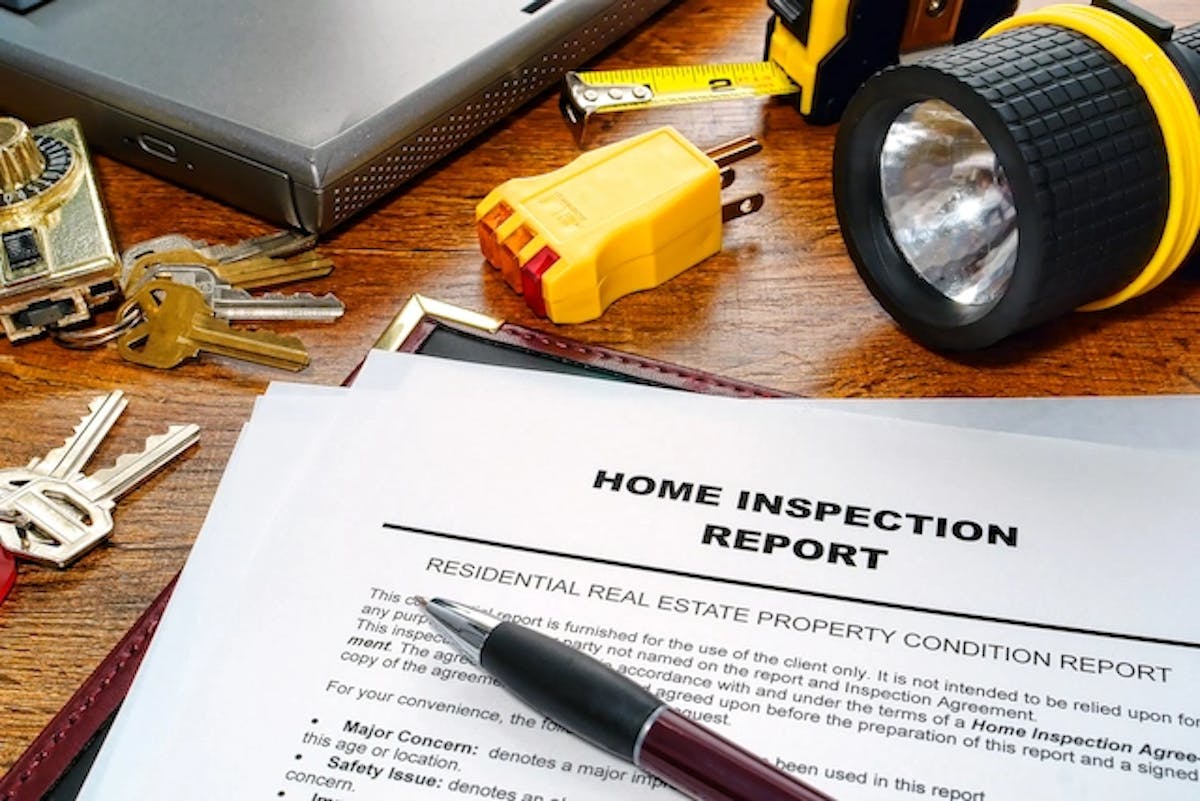Home>Home Maintenance>How To Negotiate Home Repairs With A Seller


Home Maintenance
How To Negotiate Home Repairs With A Seller
Modified: March 6, 2024
Learn effective strategies to negotiate home repairs with a seller. Get expert tips on handling home maintenance issues and ensure a fair deal.
(Many of the links in this article redirect to a specific reviewed product. Your purchase of these products through affiliate links helps to generate commission for Storables.com, at no extra cost. Learn more)
Introduction
When buying a new home, it’s common to come across some repairs or maintenance issues that need to be addressed. These repairs can range from minor cosmetic fixes to major structural issues. As a buyer, you have the option to negotiate with the seller to have these repairs taken care of before you close on the house.
Understanding the process of negotiating home repairs with the seller is crucial to ensure you get the best deal possible. This article will provide you with a comprehensive guide on how to navigate this negotiation process, allowing you to make informed decisions and achieve a fair resolution.
By successfully negotiating home repairs, you can alleviate some of the financial burden and ensure that the house you are purchasing is in the best possible condition.
Let’s dive into the world of home repairs negotiation and explore the step-by-step process to achieve a favorable outcome.
Key Takeaways:
- Negotiating home repairs with the seller is crucial for protecting your investment, avoiding future expenses, and ensuring your new home meets your standards.
- To negotiate effectively, prioritize safety and functionality, be fair and reasonable, and communicate openly to reach a mutually beneficial agreement.
Read more: How To Negotiate A New Construction House
Understanding the Importance of Negotiating Home Repairs
When purchasing a home, it’s essential to understand the importance of negotiating home repairs with the seller. This negotiation process plays a vital role in ensuring that you are making an informed decision and protecting your investment.
First and foremost, negotiating home repairs allows you to address any issues or concerns that may have arisen during the home inspection. The home inspection report will provide you with a detailed assessment of the property’s condition, identifying any existing or potential problems. By negotiating repairs, you have the opportunity to address these issues before finalizing the purchase.
Furthermore, negotiating home repairs can help you avoid costly surprises down the road. It’s not uncommon for hidden defects or maintenance issues to surface after moving into a new home. By discussing and agreeing upon repairs with the seller, you can minimize the risk of unforeseen expenses that may arise shortly after you’ve settled into your new home.
Additionally, negotiating repairs can save you time, effort, and money. Rather than having to coordinate and arrange repairs yourself after closing, you can leverage the negotiation process to have them taken care of before you move in. This ensures a smoother transition and allows you to focus on settling into your new home without the added stress of arranging repairs.
Lastly, negotiating home repairs can provide you with peace of mind and increase your confidence in the home’s condition. By addressing any necessary repairs upfront, you can have reassurance that the property is in a suitable state and meets your standards.
Overall, negotiating home repairs is a crucial step in the home buying process. It allows you to address any existing issues, prevent future surprises, save time and money, and gain confidence in the condition of the property. Now that we understand the importance of negotiating home repairs, let’s move on to preparing for the negotiation process.
Preparing for the Negotiation Process
Before diving into the negotiation process, it’s important to prepare yourself adequately. By taking the time to gather information and plan your approach, you’ll increase your chances of a successful negotiation. Here are some key steps to consider when preparing for the negotiation process.
Educate Yourself: Start by familiarizing yourself with the local real estate market and understanding common repair requests. Research the typical repair issues that arise in homes similar to the one you are purchasing. This knowledge will help you set realistic expectations and make informed decisions during the negotiation process.
Review the Home Inspection Report: Carefully review the home inspection report to identify any repair issues that need to be addressed. Note down the major concerns as well as any minor cosmetic repairs that may impact your decision. This will serve as the foundation for your negotiation strategy.
Establish Your Priorities: Determine which repairs are non-negotiable for you and differentiate them from less critical issues. This will help you prioritize your requests and focus on the most important repairs during negotiations.
Set a Repair Budget: Assess your financial situation and determine how much you’re willing to invest in repairs. This will help you navigate the negotiation process with a clear understanding of your financial limits.
Research Contractors: Before entering into negotiations, research local contractors and gather their contact information. Having this information at hand will be useful when discussing repair estimates and assessing the feasibility of requested repairs.
Anticipate Seller’s Perspective: Put yourself in the seller’s shoes and try to anticipate their mindset. Understand that they may have financial constraints or time limitations. By considering their side of the negotiation, you can tailor your approach to align with their interests, increasing the likelihood of a successful outcome.
Prepare Documentation: Compile a list of requested repairs, including detailed descriptions and supporting evidence, such as photographs or additional inspection reports. This documentation will help you present your case with clarity and credibility during negotiations.
By taking the time to prepare before entering into negotiations, you position yourself for a more successful outcome. Armed with knowledge, priorities, and a well-thought-out strategy, you’re ready to assess the home repair needs and determine potential costs.
Assessing the Home Repair Needs
Once you’ve prepared for the negotiation process, the next step is to assess the home repair needs. This involves thoroughly evaluating the property and identifying areas that require attention or improvement. Here are some key aspects to consider when assessing the home repair needs.
Structural Integrity: Begin by evaluating the structural integrity of the house. Look for any signs of foundation problems, such as cracks in the walls or uneven floors. Inspect the roof for leaks, missing shingles, or damaged flashing. Identify any issues with the chimney, gutters, or downspouts that could compromise the integrity of the structure.
Electrical Systems: Assess the electrical systems in the house. Check for outdated wiring, faulty outlets, or insufficient electrical capacity. Look for any signs of electrical hazards, such as exposed wires or overloaded circuits. Ensure that the electrical panel is up to code and can handle the demands of modern appliances.
Plumbing: Examine the plumbing system for any leaks, clogged drains, or low water pressure. Inspect the water heater for signs of corrosion or malfunction. Test the functionality of toilets, faucets, and showers to ensure they are in good working condition.
Heating, Ventilation, and Air Conditioning (HVAC): Evaluate the HVAC system to determine its efficiency and functionality. Check if the heating and cooling units are operating properly. Assess the condition of air filters, ductwork, and insulation. Identify any potential issues that could affect the comfort and energy efficiency of the home.
Interior Finishes: Inspect the interior finishes, such as walls, ceilings, and floors. Look for any evidence of water damage, mold, or pest infestation. Check for cracks or uneven surfaces that may indicate foundation issues. Assess the condition of doors, windows, and trim for any signs of wear or damage.
Exterior Features: Evaluate the exterior features of the house, including the siding, windows, and doors. Look for any signs of rot or deterioration. Assess the condition of decks, patios, or other outdoor structures. Consider the landscaping and irrigation systems, noting any areas that need attention or improvement.
Safety Concerns: Pay attention to safety concerns throughout the property. Identify potential hazards, such as loose handrails, unstable stairs, or inadequate lighting. Note any issues with smoke detectors, carbon monoxide detectors, or fire extinguishers that may need to be addressed.
By thoroughly assessing the home repair needs, you’ll have a comprehensive understanding of the repairs required. This assessment will serve as the basis for researching the potential costs associated with these repairs, which we will explore in the next section.
Researching the Potential Costs
Once you have assessed the home repair needs, the next step in the negotiation process is to research the potential costs associated with these repairs. Understanding the estimated costs will help you establish a budget and make informed decisions during negotiations. Here are some strategies to help you research the potential costs of home repairs.
Consult Professionals: Reach out to local contractors, plumbers, electricians, and other professionals who specialize in home repairs. Request quotes or estimates for the specific repairs identified during your assessment. Their expertise and knowledge will provide you with a realistic understanding of the potential costs involved.
Online Research: Utilize online resources such as home improvement websites, forums, and cost estimation tools to gather information about average costs for specific repair projects. These resources can provide you with a general idea of what to expect in terms of pricing.
Get Multiple Estimates: It’s essential to obtain multiple estimates for major repair projects. Reach out to different contractors or professionals to compare prices and ensure you’re getting a fair deal. Remember, the lowest bid may not always be the best choice, as quality and expertise should also be factored into your decision-making process.
Consider Regional Factors: Keep in mind that repair costs can vary depending on your location. Factors such as local labor rates, material costs, and regional regulations can influence the pricing. Take these regional factors into account when researching and estimating potential costs.
Factor in Time and Effort: Some repairs may require additional time and effort, especially if they are complex or involve coordinating multiple professionals. Consider the impact on your daily life and potential inconveniences associated with certain repairs. Factor in the costs of temporary accommodation or additional expenses if necessary.
Account for Contingencies: It’s important to remember that unexpected issues or complications may arise during the repair process. Plan for contingencies by setting aside a contingency fund to cover any potential additional costs that may emerge during the repairs.
By conducting thorough research on the potential costs, you’ll have a realistic idea of what to expect during negotiations. This knowledge will empower you to make informed decisions, set a budget, and negotiate more effectively. With a clear understanding of the repair needs and their associated costs, you can now prioritize the repairs and determine the seller’s responsibility in addressing them, which we will explore in the next section.
Read more: How To Negotiate Price For Home Maintenance
Prioritizing Home Repairs
After assessing the home repair needs and researching potential costs, the next step in the negotiation process is to prioritize the repairs. Not all repairs may be equally urgent or critical, so it’s important to determine which repairs should take precedence. Here are some factors to consider when prioritizing home repairs:
Safety: Start by addressing any repairs that pose immediate safety concerns. This may include fixing electrical issues, addressing structural problems, or resolving hazards such as mold or pest infestations. Safety should always be the top priority when determining which repairs to focus on first.
Functional Impact: Consider how the repair needs may impact the functionality of the home. Repairs that affect essential systems, such as plumbing, heating, or cooling, should be prioritized to ensure comfortable living conditions. Any repairs that prevent you from using certain areas or appliances in the home should also be given priority.
Preventive Maintenance: Look for repairs that, if left unaddressed, may lead to more significant problems or costly damage in the future. For example, repairing a small leak now can prevent extensive water damage down the line. Focus on these preventive maintenance repairs to save yourself from potential headaches and expenses.
Resale Value: Consider which repairs can have a significant impact on the resale value of the home. Some repairs, such as upgrading the kitchen or renovating the bathroom, can enhance the overall appeal and marketability of the property. These repairs may be worth prioritizing if you have long-term plans for selling the home.
Estimate Costs: Take into account the potential costs associated with each repair. If certain repairs are more affordable or fall within your budget, they may be more feasible to prioritize. However, balance the cost factor with the importance of the repair to avoid neglecting critical issues for the sake of saving money.
Your Personal Preferences: Ultimately, your personal preferences and priorities should also play a role in determining which repairs to prioritize. Consider the repairs that will have the most impact on your daily life and overall satisfaction with the home. This could include cosmetic updates, such as painting or flooring, that align with your personal taste and preferences.
By considering these factors, you can prioritize the home repairs and determine which ones to focus on during the negotiation process. Keep in mind that some repairs may be non-negotiable for you, while others may require flexibility. With this prioritization in mind, you can now set a budget for the repairs and gather multiple estimates, which we will discuss in the next sections.
Setting a Budget for Repairs
Once you have prioritized the home repairs, it is important to set a budget to ensure that you can effectively negotiate with the seller. Setting a budget allows you to have a clear understanding of your financial limits and helps guide your decision-making process. Here are some steps to help you establish a budget for the repairs:
Assess Your Finances: Begin by evaluating your overall financial situation. Take into consideration your income, savings, and any other financial obligations. Determine how much you can realistically allocate towards the home repairs without stretching yourself too thin.
Consider Priority Repairs: Review the repairs that you have prioritized based on safety, functionality, and preventive maintenance. Estimate the expected costs for these priority repairs. Calculate a rough total of the expenses associated with addressing these primary repair needs.
Factor in Additional Repairs: Take into account other repairs that may be necessary but are not necessarily high-priority. These could include cosmetic improvements or upgrades that you desire for the home. Consider the potential costs of these additional repairs and factor them into your budget accordingly.
Consider Contingencies: It’s essential to set aside a contingency fund to cover any unexpected or additional costs that may arise during the repair process. Typically, it is recommended to allocate around 10-20% of the total repair budget for contingencies. This ensures that you are prepared for any surprises that may occur during the repairs.
Be Realistic: During the budgeting process, it’s important to be realistic about the costs of repairs. Research the average costs for similar repairs in your area and consult with professionals to get accurate estimates. Avoid underestimating the expenses, as this may lead to financial strain or the inability to complete necessary repairs.
Consider DIY vs. Professional: Determine if certain repairs can be completed as do-it-yourself (DIY) projects rather than hiring professionals. If you have the skills and expertise, opting for DIY repairs can help reduce costs. However, be cautious not to take on repairs that are beyond your capabilities, as this may lead to further damage or safety concerns.
Review and Adjust: Once you have established a budget, review it carefully and make necessary adjustments as needed. Ensure that the budget is realistic and aligns with your financial capabilities. If the estimated costs exceed your budget, you may need to reconsider the priority of certain repairs or explore alternative options.
By setting a budget for repairs, you gain a clear understanding of your financial boundaries and can negotiate with confidence. Remember to consider the priority repairs, factor in additional expenses, allocate a contingency fund, and be realistic about the costs. With a budget in place, you can now move on to the next step of gathering multiple estimates from professionals, which we will discuss in the following section.
When negotiating home repairs with a seller, prioritize safety and structural issues over cosmetic ones. Get multiple quotes for the repairs to ensure a fair deal.
Gathering Multiple Estimates
Now that you have established a budget for repairs, the next step in the negotiation process is to gather multiple estimates from professionals. Obtaining multiple estimates allows you to compare prices, assess different approaches to the repairs, and ensure that you are getting a fair deal. Here are some tips for gathering multiple estimates:
Research Local Professionals: Start by researching and compiling a list of local professionals who specialize in the type of repairs needed. Look for licensed and reputable contractors, plumbers, electricians, or other relevant experts in your area. Seek recommendations from family, friends, or your real estate agent for trusted professionals.
Contact Multiple Professionals: Reach out to at least three different professionals to request estimates for the repairs. Provide them with detailed information about the repairs needed, including any specific requirements or preferences. This will ensure that each professional has a clear understanding of the scope of work.
Provide Consistent Information: When requesting estimates, make sure to provide consistent information to each professional. This includes the same description of the repairs, any supporting documentation or inspection reports, and any additional details they may need. Providing consistent information will allow for accurate and fair comparisons between the estimates.
Ask Questions and Seek Clarification: During the estimate process, don’t hesitate to ask questions and seek clarification from the professionals. Understand their approach to the repairs, the materials and labor involved, and the timeline for completion. Clarify any terms or conditions that may impact the final cost.
Compare Prices and Services: Once you have received the estimates, carefully review and compare them. Look beyond just the total cost and consider the breakdown of expenses, the materials being used, and the warranties or guarantees included. Assess the level of service provided by each professional and how they align with your expectations.
Evaluate Experience and Expertise: Take into account the experience and expertise of each professional. Consider their reputation, years of experience, and any certifications or specializations they may have. A more experienced professional may charge a higher price but can also provide a higher level of quality and expertise in their work.
Beware of Unusually Low or High Estimates: While reviewing the estimates, be cautious of unusually low or high prices. Extremely low estimates may indicate subpar workmanship or the use of low-quality materials, while significantly high estimates may be an indication of overpricing. Use your judgment to identify estimates that seem fair and reasonable based on the information provided.
Negotiate Based on the Estimates: Armed with multiple estimates, you can confidently negotiate with the seller. Present the estimates as evidence of the estimated costs and use them as a basis for your negotiation. If the seller is unwilling to address the repairs or negotiate, you can use the estimates to determine if you’re comfortable proceeding with the purchase given the anticipated costs.
Gathering multiple estimates provides you with valuable insight into the potential costs of the repairs. It allows you to make informed decisions, negotiate effectively, and ensure that you’re getting a fair deal. With the estimates in hand, you can now move forward with presenting your repair requests to the seller, which we will explore in the next step of the negotiation process.
Determining the Seller’s Responsibility
Once you have gathered multiple estimates for the necessary repairs, the next step in the negotiation process is to determine the seller’s responsibility. Not all repairs may be the sole responsibility of the seller, and it’s important to understand which repairs you can reasonably expect the seller to address. Here are some factors to consider when determining the seller’s responsibility:
Contractual Agreements: Begin by reviewing the sales contract and any additional agreements made during the negotiation process. Look for clauses or provisions that outline the seller’s responsibilities regarding repairs. This will serve as a starting point to understand the seller’s obligations.
Local Laws and Regulations: Familiarize yourself with local laws and regulations that may impact the seller’s responsibility for repairs. Some areas may have specific requirements regarding disclosure of defects or the seller’s responsibility to ensure the property meets certain standards. Verify if any local rules apply to your situation.
Presence of Contingencies: If your purchase offer included contingencies such as a home inspection or repair contingency, it may provide you with leverage to negotiate repairs with the seller. Review the terms and conditions of these contingencies to understand the extent to which the seller is obligated to address the repairs identified in the inspection report.
Property Disclosure Statement: Study the property disclosure statement provided by the seller. This document should outline any known defects or issues with the property. Compare the disclosed information with the repairs identified in the inspection report to determine if the seller failed to disclose any relevant problems. If so, the responsibility for those repairs may lie with the seller.
Repair Request Presentation: Prepare a clear and well-documented repair request that outlines the needed repairs, along with supporting evidence such as inspection reports and estimates. Present this request to the seller, clearly stating which repairs you believe are their responsibility based on the factors mentioned above.
Negotiation Power: Consider your negotiation power in terms of the overall condition of the property, the market conditions, and the motivation of the seller. A seller who wants to close the deal quickly may be more willing to address repairs or provide financial concessions to accommodate for them.
Cost-Benefit Analysis: Evaluate the estimated costs of the repairs compared to the overall purchase price and value of the property. Some repairs may fall below a certain threshold where it may be more practical to handle them as a buyer rather than involving the seller. Consider if it’s worth pursuing repairs if the cost is minimal or if it’s more efficient to address them yourself after the purchase.
By considering these factors, you can determine the extent of the seller’s responsibility for repairs. Remember, negotiation is a process, and finding a mutually beneficial agreement is the ultimate goal. If both parties are unwilling to reach an agreement, you may need to reassess your options and decide whether to proceed with the purchase or explore other alternatives.
Presenting Repair Requests to the Seller
Once you have determined which repairs are the responsibility of the seller, the next step in the negotiation process is to present your repair requests to the seller. How you present these requests can greatly impact the outcome, so it’s important to be clear, concise, and fair. Here are some tips for effectively presenting repair requests to the seller:
Organize Your Request: Compile a comprehensive repair request that includes a detailed list of repairs along with supporting documentation, such as inspection reports and estimates. Organize the request in a clear and logical manner to make it easier for the seller to understand and evaluate.
Be Specific and Transparent: Clearly specify the repairs you are requesting and provide details on what needs to be done. Use specific language to describe the areas or systems requiring attention. Avoid vague or ambiguous requests that may lead to misunderstandings or disagreements.
Provide Supporting Evidence: Back up your repair requests with relevant supporting evidence. Include inspection reports, photographs, or any other documentation that clearly indicates the need for the repairs. This strengthens your case and helps the seller understand the extent of the issues.
Include Estimates: Include the estimates you obtained from professionals for the repairs. This provides the seller with a realistic expectation of the costs involved. Including multiple estimates can also demonstrate that the figures provided are fair and reasonable.
Highlight Safety Concerns: Emphasize any repair requests related to safety concerns. Safety issues are a legitimate concern for both buyers and sellers, and the seller may be more inclined to address these concerns. Highlighting safety as a priority can help garner support for those specific repairs.
Focus on Major Issues: Prioritize the major repair issues that have a significant impact on the value or livability of the property. While cosmetic repairs may be important to you, they are generally not the responsibility of the seller unless explicitly negotiated. Focus on repairs that affect the structural integrity, functionality, or safety of the home.
Be Reasonable and Fair: Keep your repair requests reasonable and fair. Avoid asking for excessive repairs that go beyond the scope of what is necessary or within the seller’s responsibility. Being fair in your requests increases the likelihood of a positive response from the seller.
Communicate Clearly and Professionally: Present your repair requests in a professional and respectful manner. Use clear and concise language to avoid misunderstandings or confusion. Be open to communication and responsive to any questions or concerns the seller may have.
Negotiate in Good Faith: Approach the negotiation process with a spirit of compromise and cooperation. Be open to discussion and explore options for finding a mutually beneficial solution. Remember that the goal is to reach an agreement that satisfies both parties.
By effectively presenting your repair requests to the seller, you increase the chances of a positive response. Clear communication, supporting evidence, and a fair approach can help facilitate a successful negotiation. Once an agreement is reached, it’s important to finalize the repair agreement, which we will cover in the next section of the negotiation process.
Negotiating a Fair Agreement
When negotiating a fair agreement for home repairs, it’s essential to engage in open and constructive communication with the seller. The goal is to find a resolution that satisfies both parties and ensures that the necessary repairs are completed. Here are some strategies to help you negotiate a fair agreement:
Listen and Understand: Take the time to listen to the seller’s perspective and understand their concerns. This can help foster a cooperative negotiation environment and increase the chances of reaching a fair agreement. Consider their reasoning, financial constraints, or any limitations they may have in addressing the repairs.
Focus on Common Ground: Look for areas of common ground where both parties can agree. Find shared interests and goals, such as ensuring the property is in good condition or maintaining a positive closing process. Emphasize these points to build rapport and facilitate a mutually beneficial agreement.
Be Prepared to Compromise: Understand that negotiation involves give and take. Be prepared to compromise on certain repair requests if it helps achieve a fair agreement. Consider alternative solutions or options that may address concerns while still meeting your objectives.
Consider Financial Contributions: Explore the possibility of financial contributions from both parties towards the repairs. For example, you may be willing to increase your offer or provide a credit at closing to cover a portion of the repair costs. This can help share the financial burden and encourage the seller’s cooperation.
Get Multiple Repair Quotes: If the seller is hesitant about the repair estimates you obtained, consider getting multiple quotes from different contractors or professionals. This can demonstrate that the estimates are accurate and fair. Sharing these additional quotes can help build trust and credibility in the negotiation process.
Be Realistic About Timelines: Discuss realistic timelines for completing the repairs. If time is a concern or if you have specific deadlines to consider, make this clear during the negotiation. Ensure that the agreed-upon timeline aligns with both parties’ needs and is feasible for the completion of the repairs.
Put Agreements in Writing: Once an agreement is reached, document the details in writing. This can include a formal addendum to the sales contract outlining the agreed-upon repairs and any financial arrangements. Having a written agreement helps prevent misunderstandings and provides clarity for both parties.
Consult with Professionals: If you’re facing challenges in reaching a fair agreement, consider seeking advice from professionals such as your real estate agent, attorney, or inspector. They can provide guidance based on their experience and expertise, helping you navigate the negotiation process more effectively.
Maintain a Positive Attitude: Remember to approach the negotiation process with a positive attitude. Stay professional, respectful, and focused on finding a fair resolution. A positive attitude can help build trust and facilitate productive discussions.
By employing these strategies, you can negotiate a fair agreement for home repairs. Effective communication, flexibility, and consideration of both parties’ interests are key to reaching a satisfactory outcome. Once the repair agreement is finalized, the next step is to ensure all parties are in agreement and proceed with the necessary steps to finalize the repairs.
Finalizing the Repair Agreement
After successfully negotiating the repair agreement with the seller, the next step is to finalize the agreement to ensure that all parties are clear on the expectations and responsibilities. This finalization process involves documenting the agreed-upon repairs, establishing timelines, and outlining any financial arrangements. Here are the steps to finalize the repair agreement:
Document the Agreement: Put the details of the repair agreement in writing. This can be in the form of an addendum to the sales contract or a separate agreement specifically addressing the repairs. Ensure that all parties involved – you, the seller, and any relevant professionals – have a copy of the agreement.
Outline Repairs Clearly: Include a clear and detailed description of the repairs to be completed. Specify the areas of the property that require attention and the specific work that needs to be done. This clarity helps avoid confusion or potential disputes later on.
Establish Timelines: Determine the timelines for completing the repairs. Define the start date and the expected completion date for each repair. Ensure that the agreed-upon timelines are feasible and realistic for all parties involved.
Detail Financial Arrangements: Clearly state any financial arrangements agreed upon, including who will bear the costs of the repairs. Specify if any credits or adjustments will be made at closing, or if the repairs will be completed prior to closing. If there are any shared expenses, outline the specific amounts or percentages each party will contribute.
Include Warranty or Guarantee: If applicable, discuss and document any warranties or guarantees for the repairs. Determine the duration and scope of the warranty, as well as any provisions for addressing future issues that may arise.
Signatures and Initials: Once the repair agreement is documented, ensure that all parties involved sign and initial where necessary. This signifies their understanding and acceptance of the terms outlined in the agreement.
Share Copies and Communicate: Provide each party with copies of the finalized repair agreement. Keep open lines of communication throughout the repair process, allowing for updates and addressing any concerns or changes that may arise.
Coordinate with Professionals: If the repairs involve hiring professionals, coordinate with them to schedule the work and ensure a smooth process. Confirm their availability, provide them with the necessary documentation, and maintain communication to ensure that the repairs are completed as agreed.
Documentation for Closing: If any repair costs are being addressed by credits or adjustments at closing, ensure that all required documentation is provided to the appropriate parties involved in the closing process. This ensures a smooth and accurate transfer of funds or credits.
Finalizing the repair agreement establishes a clear understanding of the repairs to be completed, the timelines involved, and any financial arrangements. It provides all parties with confidence and serves as a foundation for completing the repairs. With the agreement in place, you can confidently proceed with the necessary repairs to ensure the property meets your expectations.
By following these steps and maintaining open lines of communication, you can ensure a smooth process and a successful resolution to the repair negotiations. Once the repairs are completed, you can proceed with the closing process and move forward with confidence, knowing that the necessary repairs have been addressed.
Recap and Conclusion
Negotiating home repairs with the seller is a crucial step in the home-buying process. It allows you to address existing issues, potentially save on future expenses, and ensure that the property meets your standards. Let’s recap the key points discussed in this article:
In the introduction, we emphasized the importance of negotiating home repairs and the impact it can have on your investment and peace of mind. We then delved into the preparatory steps, which include educating yourself, assessing the home repair needs, researching costs, setting a budget, and gathering multiple estimates.
From there, we moved on to prioritizing home repairs based on safety, functionality, preventive maintenance, and potential resale value. Following this, we discussed determining the seller’s responsibility, considering contractual agreements, local regulations, and property disclosure statements.
The article then covered the process of presenting repair requests to the seller, highlighting the importance of clear communication, supporting evidence, and fairness. We also emphasized the significance of negotiating in good faith, compromising when necessary, and exploring financial contributions from both parties.
Finalizing the repair agreement was the next step, which included documenting the repairs, establishing timelines and financial arrangements, and obtaining signatures. We also underscored the importance of communication and coordination with professionals throughout the repair process.
In conclusion, negotiating home repairs is an essential aspect of the home-buying journey. By following the steps and strategies outlined in this article, you can navigate the negotiation process with confidence and advocate for a fair resolution that addresses your repair needs. Remember to approach the negotiation with professionalism, flexibility, and a focus on finding common ground.
With a finalized repair agreement in place, you can proceed with the necessary repairs, confident that your investment is being protected and that your new home will be in the best possible condition. Buying a home is an exciting milestone, and by effectively negotiating home repairs, you can enhance your overall homeownership experience. Good luck with your negotiations and enjoy your new home!
Frequently Asked Questions about How To Negotiate Home Repairs With A Seller
Was this page helpful?
At Storables.com, we guarantee accurate and reliable information. Our content, validated by Expert Board Contributors, is crafted following stringent Editorial Policies. We're committed to providing you with well-researched, expert-backed insights for all your informational needs.














0 thoughts on “How To Negotiate Home Repairs With A Seller”